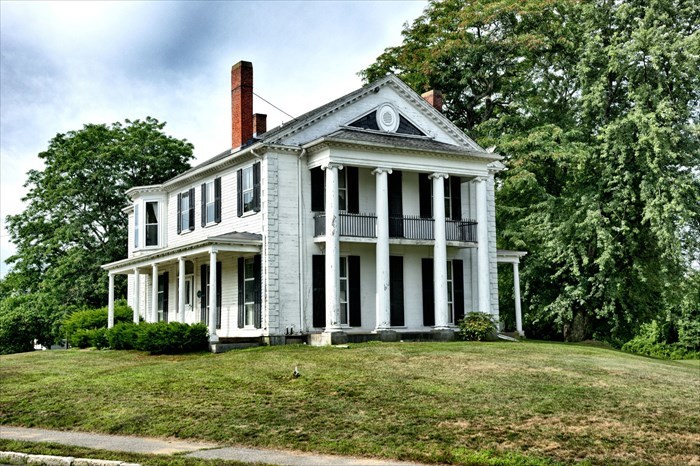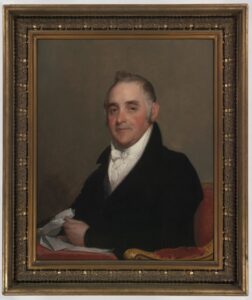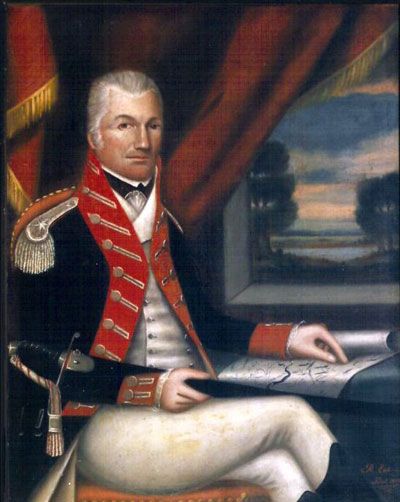John Wyles, Jr. and Israel Thorndike


Who?
John Wyles Jr. of Brimfield, Massachusetts came to Ohio with Israel Augustus Thorndike in 1816 to survey lands owned by Israel Thorndike (uncle of Henry and Israel Augustus)
Henry Thorndike and his brother Israel Augustus Thorndike came from Jaffrey, New Hampshire in 1816 to settle in the township
Their uncle Israel Thorndike of Beverly, MA owned land in the township that Henry was appointed to be the agent for selling
What?
The Thorndikes were wealthy, educated New Englanders looking to profit from developing lands in the Western Reserve of Ohio
John Wyles Jr. inherited land in the township from his father in 1814 and appointed Henry Thorndike as his agent to sell the remaining parcels
When?
The Thorndike brothers and John Wyles Jr. arrived in 1816
The township was officially named Thorndike in March 1818, but the name was changed to Brimfield in March 1830
Where?
Town 2, Range 9 in the Western Reserve of Ohio, which became known as Thorndike Township and later Brimfield Township in Portage County
Why?
The Thorndikes and Wyles saw an opportunity to develop and profit from selling lands in the frontier of the Western Reserve
Other Information Known
Due to there being a limited amount of published/transcribed information about Mr. Wyles at all, there’s not a lot of assumptions one can make about Mr. Wyles or his family. All the information that has been retrieved about Mr. Wyles has been provided majorly through letters he had received from other figures explored throughout this “Cast of Characters” page. However, due to his unresponsive nature to the letters he would send, and the vindication in which others would address Mr. Wyles in these letters, it is to be assumed that he was regarded in a manner of authority and high respect. After all, he was a short lived mayor of a town in Ohio, which was shortly called Wylestown for an undisclosed short period of time, after John Wyles. However, after a change in how the township was organized, the town got renamed a few times before it permanently got renamed to Brimfield. Wyles was very well associated with Israel Thorndike, a prominent figure of the recently enacted U.S. government who was active both politically and business-wise. Nevertheless, the scholarship of these individuals and their families are few and far between. We can assume they were, at the very least, indifferent to the use of enslaved people for labor and the displacement of native peoples from their lands as they rejoice in the benefits in which they are able to enjoy these “commodities” without seemingly no guilt or demand for action to resist from using the despairing suffering of these groups of people. This point is only reinforced when you see Wyles associating with people like Thorndike, who was a slave trader. Due to the lack thereof published documentation of any action made by Wyles, we can only infer that the man was someone who either didn’t like to be in the spotlight, or refused to take a leadership role as he was already preoccupied with other more private matters, such as caring for his family, providing stability, and a place where they can comfortably reside in.
General Daniel Bissell

Who?
General Daniel Bissell
Son of Ozias and Mabel Robarts Bissell
From a family of soldiers and military leaders
What?
Served with distinction in the military, rising through the ranks
Commanded forts like Fort Bellefontaine and Fort Massac
Played a role in providing security in the Louisiana Territory under American rule
Fought in battles like St. Clair’s Defeat and the Battle of Lyon’s Creek
Struggled to preserve his rank after the War of 1812
Owned a farm called Franklinton near St. Louis
When?
Born around 1768 in Windsor, Connecticut
Served in the Revolutionary War
Commanded Fort Bellefontaine 1808-1813
Participated in War of 1812 victory at Lyon’s Creek in 1814
Struggled over his rank from after 1812 until his death in 1833
Where?
Windsor, Connecticut (born)
St. Louis area – Fort Bellefontaine, Franklinton farm
Posts like Fort Massac on the Ohio River
Battle sites like St. Clair’s Defeat in Ohio, Lyon’s Creek
Why?
Came from a military family, so pursued a military career
Helped provide frontier defense and security as the U.S. expanded westward
Sought to preserve his military rank and pension late in life
Other Information Known
Information about Bissell was difficult to retrieve, but for other reasons. For one, around the same time General Daniel Bissell was alive, there was another man of the same name who was a spy for George Washington’s army during the early 19th century. It is easy to get both men confused and tempting to assume that both men are one person, but unfortunately due to a slight difference in age and a differing course of life Daniel Bissell the spy went though, it is safe to assume that both men are in fact two different people. Similarly to Mr. Wyles, there isn’t much information we could retrieve of Gen. Bissell as our sources were mostly letters he sent to Wyles. Yet, it is clear through his writing that he was a family-man, someone who is cautious and respectful to Wyles, despite him seemingly being a more prominent figure compared to Wyles in the scholarship being presented. There is a portrait of Bissell, where compared to Wyles, we only have his gravesite and his house in Brimfield, MA. The home of Gen. Bissell is also preserved and used as a gathering venue, stationed in St. Louis County, MO and owned by the same county. Similarly to Wyles, there is clear evidence to support that Bissell was not in any way against the use of enslaved people for labor or the displacement of native peoples from their lands, as there seems to have been slave quarters around the house in St. Louis, in which the enslaved people took care of the fields surrounding the house.